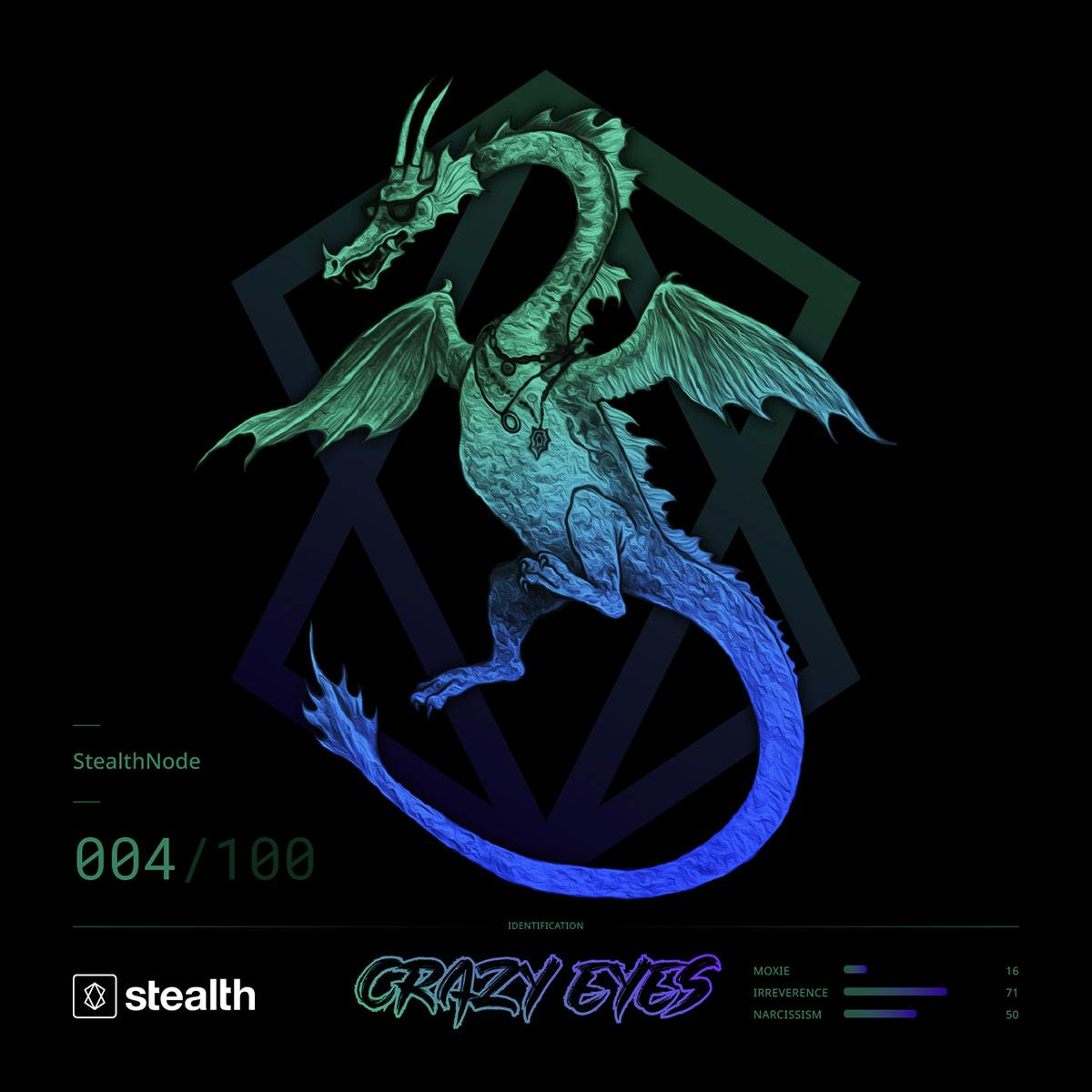
NFTs explained through a practical example: StealthNodes
NFTs are still somewhat of an enigma in the cryptocurrency world. This article offers easy-to-understand explanations and a view of NFTs through StealthNodes, a feature of Stealth for which we developed the website, cryptocurrency mobile wallet, and blockchain explorer.
If you are keeping track of the world of cryptocurrencies and blockchain technology, you have probably come across the term NFT (Non-fungible Token). Although they have become a very popular topic lately, I still haven’t encountered an article or any piece of writing which proficiently explains their potency and application possibilities in the real world and our lives.
Those who are not absolutely out of the loop probably heard about some NFT projects, such as CryptoKitties and CryptoPunks. I personally found it difficult to take seriously the idea connected with virtual cat mating and selling (which have managed to stop Ethereum for over a month in 2017 due to a large number of transactions), so I hope that I will manage to demystify their potential and what makes them unique.
I will present NFTs through the project called Stealth, on which we have been working actively for some time now.
Namely, Stealth enabled buying NFTs which are illustrations of dragons, and each illustration is associated with a specific Stealth Node NFT.
What’s actually Stealth?
In short, project Stealth’s mission is to create quick, and private management of digital assets without fees.
Quick overview of project features:
- A block is created in 5 short seconds
- Feeless transactions
- Cryptographically private transfers
- Massive blockchain scalability
- Blockchain management
- It supports Smart Contracts, Blockchain Oracles, and Sidechains.
Exiting the standard digital asset management is the main focus of the entire project.
Besides the speed, security, privacy, and accessibility (without fees), one of the advantages of the project is also the attractive design.

Let’s go back to NFT
NFT is a record that represents any kind of unique digital asset located on the blockchain, so there is no possibility of copying. It can neither be substituted with another NFT of the same value nor can its value be divided. In other words, if you are in possession of a specific NFT, nobody else can possess an identical NFT.
As opposed to cryptocurrencies such as Bitcoin, each NFT is unique because it contains unique characteristics and data. On the other side of the spectrum, there are ‘regular’ (fungible) tokens such as euro or kuna. If two people have 10 kuna bills and they exchange those bills, nothing happens in theory - nobody loses anything and both parties have an equal value in money. In other words, 10 kunas will always be 10 kunas, no matter the bill’s serial number, who used to own that bill, or if those 10 kunas were in a bank account. It’s the same with cryptocurrencies because 1 BTC is replaceable with 1 BTC.
Now, let’s go back to the argument about the serial number on a bill. If we observe the example of purchasing ice cream, the mentioned 10 kuna bill is replaceable and worth the same as any other 10 kuna bill. If we turn for a second to the context of collecting bills with interesting serial numbers - due to the importance of the serial number, the bills aren’t fungible in that case. For example, let’s take certain American dollar bills with a serial number that consists exclusively of the same numbers. Some of these one-dollar bills were sold for several thousand dollars.
In theory, NFT can be anything: a photograph, collectible, ticket, game item, and even a physical object which, thanks to Blockchain, can’t be manipulated (changed or deleted) so its ownership is easily checked.
We can try to understand this via an example of watching a film on a streaming platform; in order to watch a film, we have to pay a certain amount of money. Despite paying for the film, we don’t have it in our physical possession. It’s a similar situation with software. In both cases, the problem of illegal film or program copying and redistributing occurs.
A specific NFT can have only one owner. Others may only try to copy it, but only one is authentic. A good illustration that remained carved in my memory is the digital museum in which people exhibit their artwork. The visitors pay for the entry tickets, and the artists get a portion of the ticket sale. The artist’s ability to display its art on blockchain in the form of NFTs and prove ownership of a specific object or artwork with certainty is precisely why NTFs are most often associated with the music and artwork industries.
Another interesting example are different game items such as weapons, equipment, or skins. You must have facepalmed at least once when you read that someone has purchased a World of Warcraft axe or an AWP skin for Counter-Strike which cost like a brand new car. An interesting feature of NFTs and game items is that they can outlive the game to which they initially belong and be used in other games.
If you want to create and sell something in the form of an NFT, OpenSea is the platform on which you can mint (create) a token and put it up for sale. Bear in mind that the endeavor will cost you some Ether.
Why are NFTs cool?
By now, we probably understand some of the basic characteristics of NFTs, but there are still some worth mentioning:
- Rarity - since they can’t be copied, they are rare by nature. In case you possess one of just a couple of NFTs from a certain artist, you are one of the rare people in the entire world who has a specific collectible that can be re-sold
- Longevity - the tokens can be removed from the blockchain or steal, except, of course, in the unlikely event that the entire blockchain “goes down”
- Transparency - on the blockchain, you can see who minted the NFT, sent it, or sold it, so its lifecycle can be proven
- Immutability - thanks to blockchain, no one can change the data related to the token
I’m sure that the instances of the digital museum and steaming films have made the NFT application possibilities a little clearer, but they still somewhat seem like a long shot. If we think for a moment about how the land registry data and health records are kept and what would happen if a natural catastrophe destroyed all that data, transferring everything to the blockchain in the form of NFTs would ensure all mentioned pieces of information are safe from any loss or alterations. The application for NFTs is wide and the increased digitalization will give them an extra push which we will witness quite soon, I believe.
What makes StealthNode NFTs interesting?
While buying a StealthNode, it was possible to choose a dragon that will be permanently connected to the StealthNode (all dragons are currently sold out). Each dragon has a name, description, and specific characteristics that make up its personality. For example, Kaleo studied classical guitar and later on moved to Hawaii to play ukulele in a bend, while Kyle doesn’t go anywhere without his longboard.
Those illustrations were made by Johanna Westerman, an artist. Besides dragons generally being cool, these NFTs, together with their dragons, are purchased directly from the blockchain, and not the artist.

The main role of StealthNodes is the node validation in the network in the so-called Junaeth protocol. With the block validation, the node is assigned a certain amount of Stealth by the blockchain. Stealth is currently the only blockchain that has the implemented logic of mediating between the delegate (in charge of block signing) and the owner of the Stealth node. It is important to note that the owner of the node and the delegate can be different people, that is, roles, and it can be more of them. During the StealthNode purchase, one can specify which percentage would go to which role, which means that it is the protocol that takes care of the defined percentages distribution among the roles.
Stealth is a project of great potential that unites all the interests and activities that Barrage focuses on. Participating in the creation of the ‘content of the future’ accompanied by the exponential growth of interest is something that motivates us to continue to create opportunities to develop projects of this importance in the dynamic world of fintech.
Your take on the subject
They say knowledge has power only if you pass it on - we hope our blog post gave you valuable insight.
If you want to share your opinion or learn more about NTFs, feel free to contact us. We'd love to hear what you have to say!